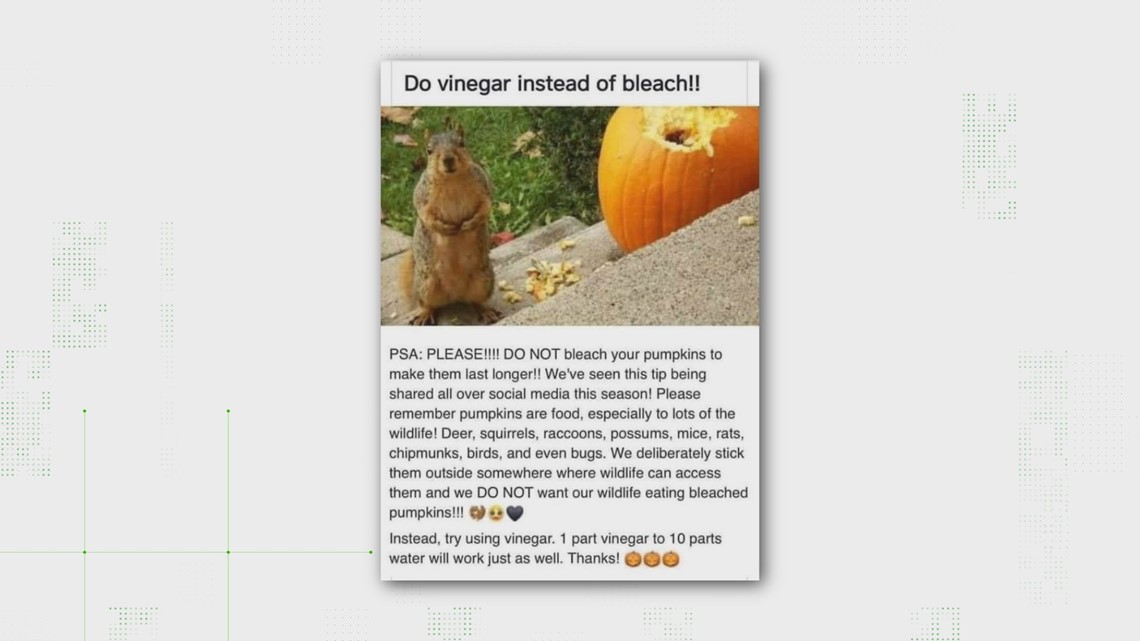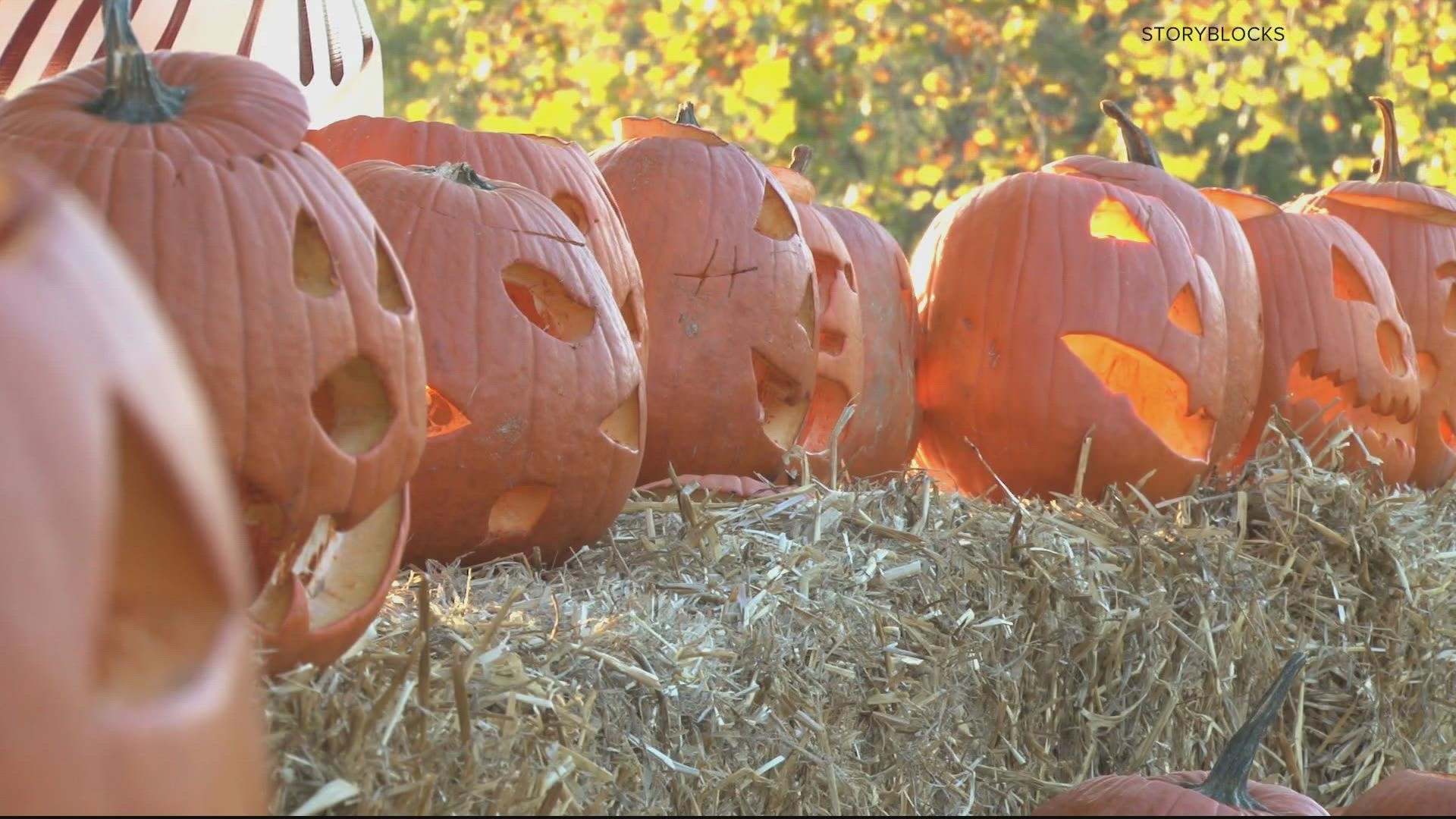WASHINGTON — It’s the season for tricks, treats, dressing up and sharing spooky stories--and fact-checking a few of those stories we see online, too, like a post about keeping those pumpkins popping throughout the fall.
THE QUESTION:
Does bleach preserve a pumpkin, and is it dangerous for critters?
OUR SOURCES:
- John Porter, Urban Agriculture educator with the University of Nebraska extension office
- Virginia Department of Wildlife Resources
- Oklahoma Cooperative Extension Service
WHAT WE FOUND:
There’s a good chance there’s a gourd or two on the porch or doorstep–it is October after all. A meme shared here on Facebook asserts one way to keep your pumpkins lasting through the fall is with a bleach bath, but cautions: that’s bad for wildlife.


“On the surface of that pumpkin, there's lots of fungi and bacteria and things that will eventually break through the skin of the pumpkin,” said John Porter, Urban Agriculture educator with the University of Nebraska, explains. That’s why he says using diluted bleach to sanitize that pumpkin, getting rid of that hungry bacteria, can extend its life.
“Eventually, even if you're not carving a pumpkin, you will usually succumb to some sort of rot over time,” he said.
Clorox, a company that makes bleach, even includes a pumpkin-bleaching tutorial on its website.
“The key is to use it correctly,” said Porter.
Bleach is actually commonly used in agriculture–though the USDA cautions against its household use to clean raw fruits and vegetables.
To preserve a pumpkin, first dilute the bleach–no more than a tablespoon of bleach per gallon of water—and use the solution in a well-ventilated area.
“You spray it on the surface, and then you let it dry. So what we smell bleach and you get that strong scent; once it's diluted, and once it's open to the air, bleach actually dissipates very quickly. So within 24 hours, all of that bleach is gone from the surface of that pumpkin."
That means shortly after spritzing your pumpkin, it’s front-porch ready—though Porter recommends waiting a bit longer if you bleach the more-absorbent inside of a Jack-O-Lantern.
That initial post suggests using vinegar to preserve a pumpkin as a natural, critter-friendly alternative, but Porter says evidence is divided on how useful that is as a disinfectant is in this case.
“There is minimal risk to wildlife, because, to be honest, most people don't realize that many of the pumpkins and things that you buy from the grocery store or the Farmers Market has probably already been at one point washed with bleach,” said Porter.
The Virginia Department of Wildlife resources tells us a more evident concern for animals this Halloween would be plastic trash that accumulates, like from candy wrappers.

